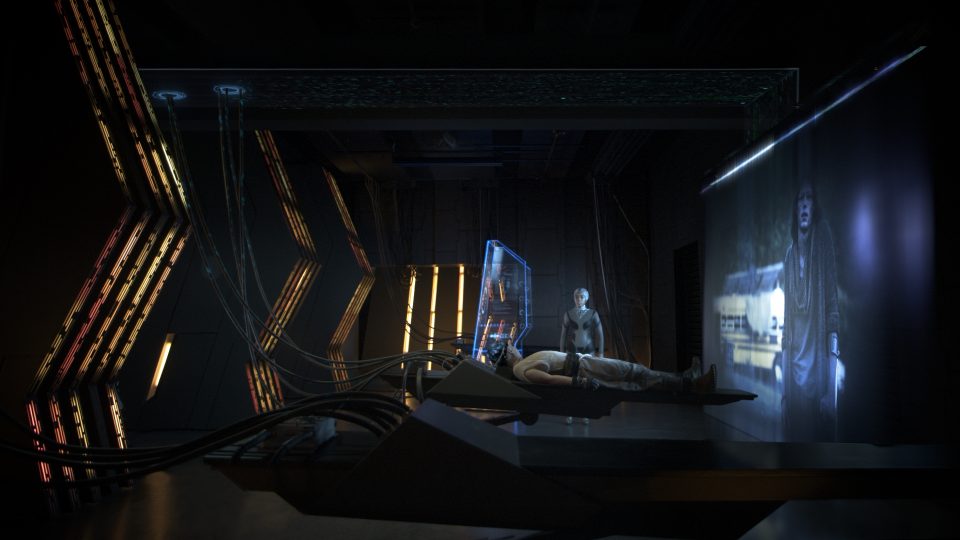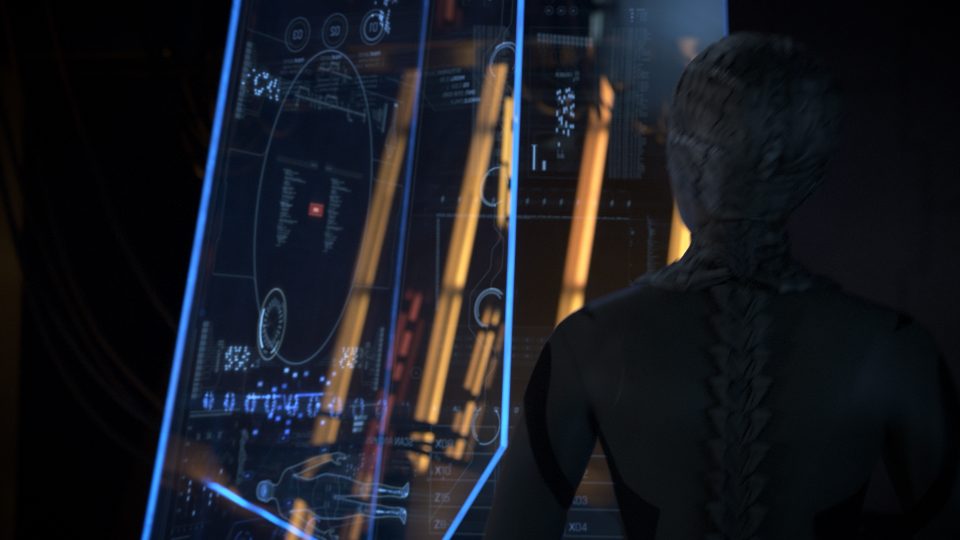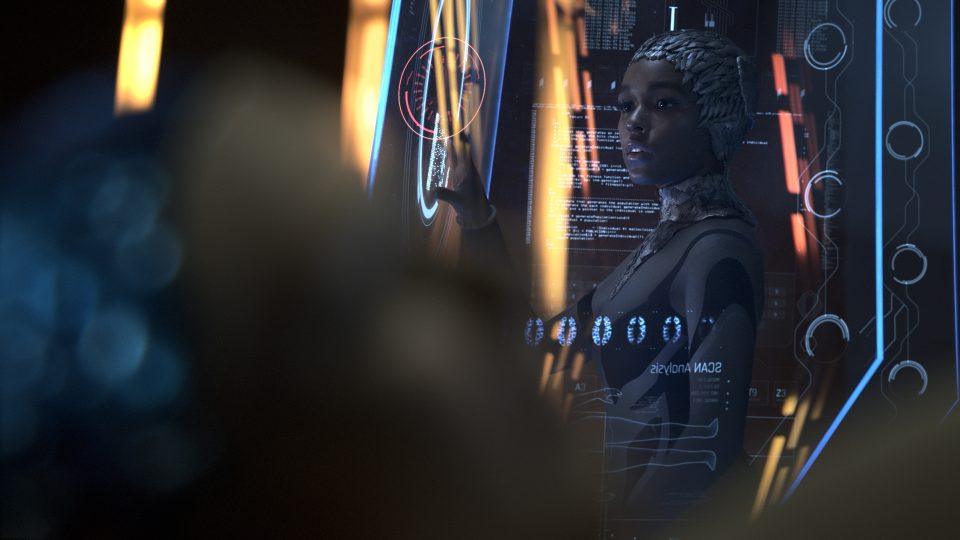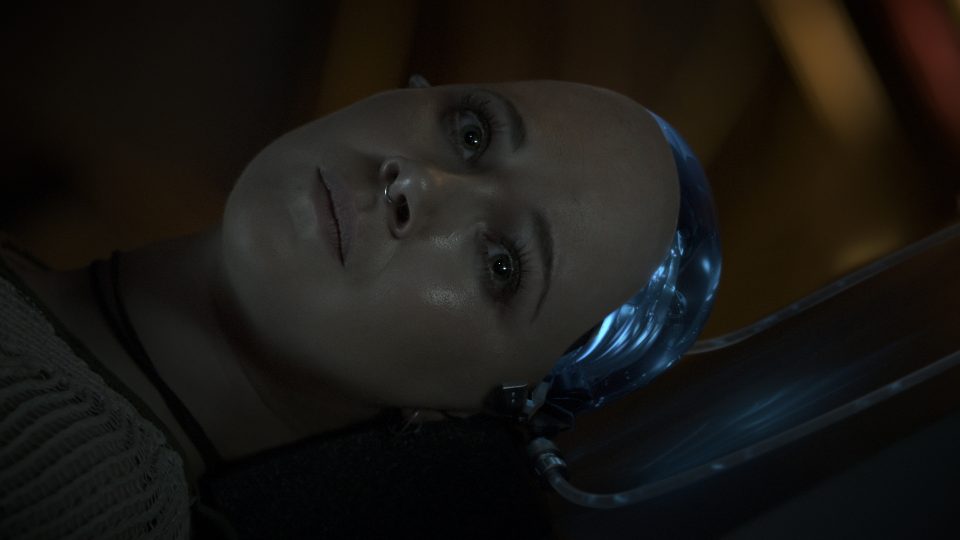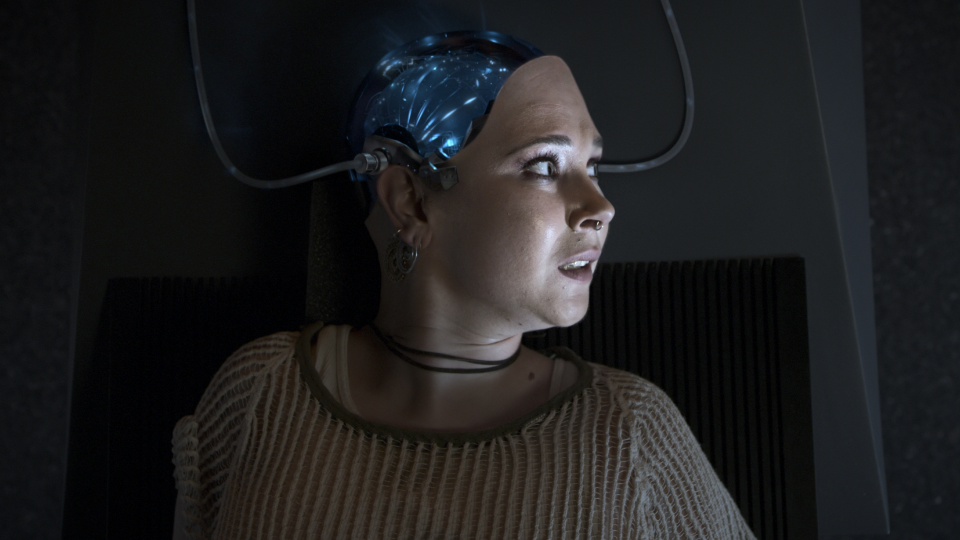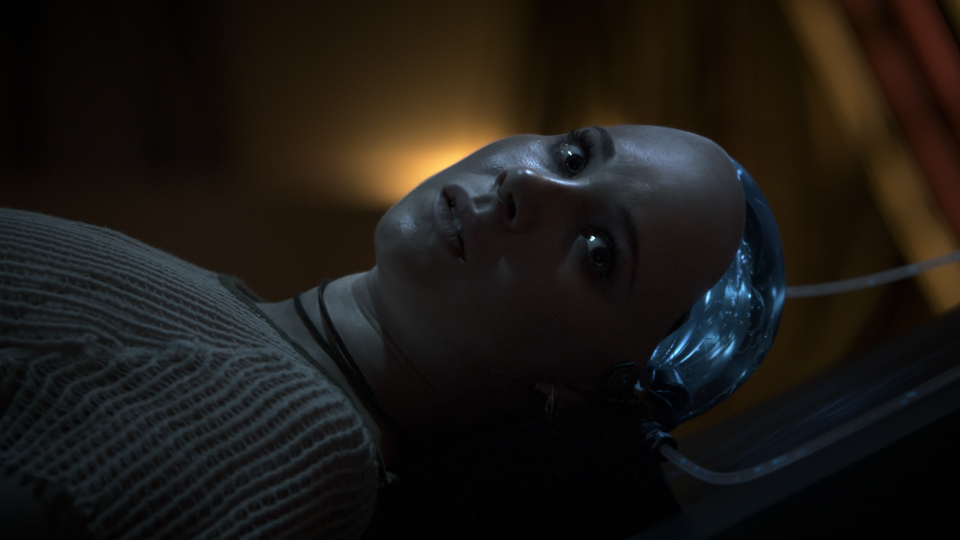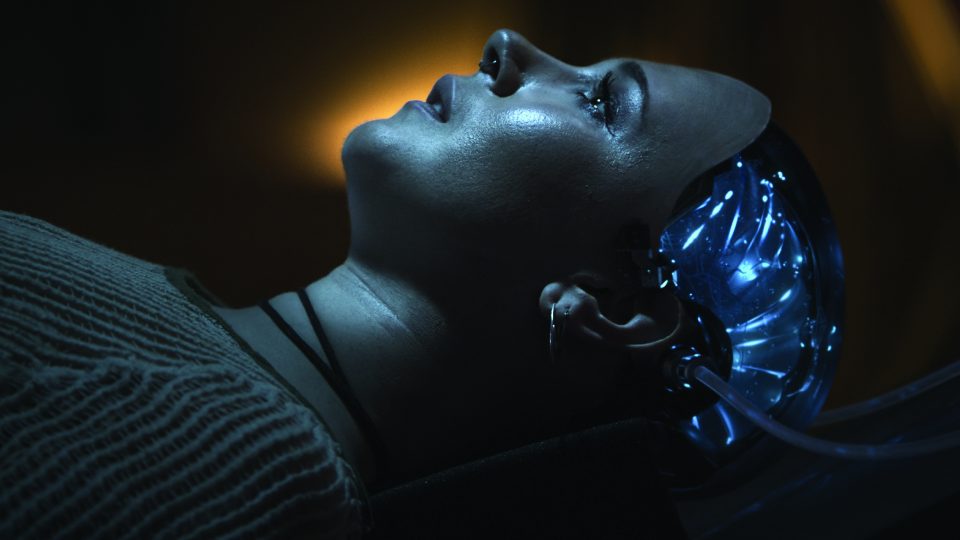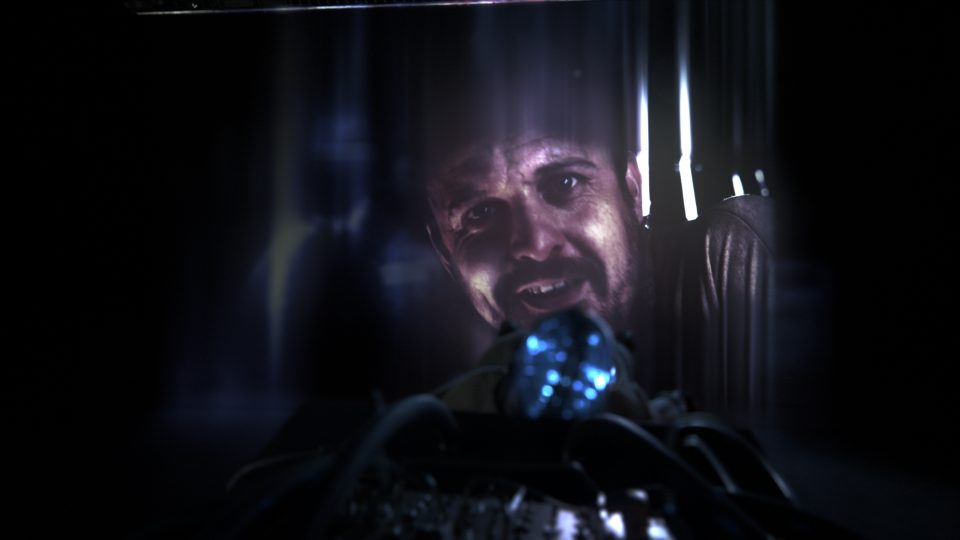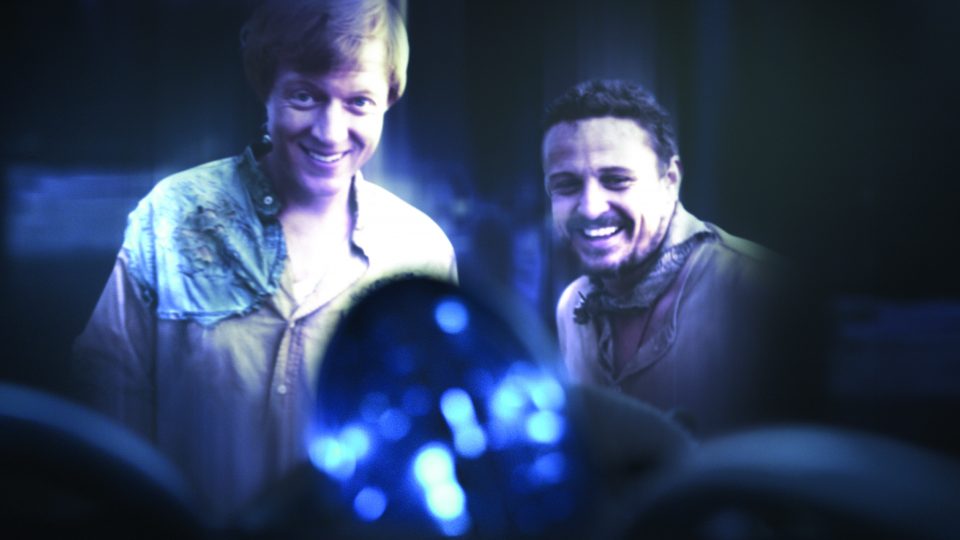/Electric Dreams
Episode 8: Autofac
Electric Dreams (2017) is an anthology series adapted from the short stories of acclaimed sci-fi author Philip K. Dick (Blade Runner, Minority Report).
In the same format as genre classics The Twilight Zone, and the contemporary Black Mirror, Electric Dreams’ 10 stand-alone episodes deal with Philip K. Dick’s recurrent themes of reality, identity, philosophy in an often dystopian future where human relationships are shaped by corporations and technology.
In the series 8th installment, Autofac, a small band of survivors in a post-apocalyptic world set out to destroy the automated factory – the Autofac – which is consuming and depleting every resource in the natural world, producing what it perceives as needed.
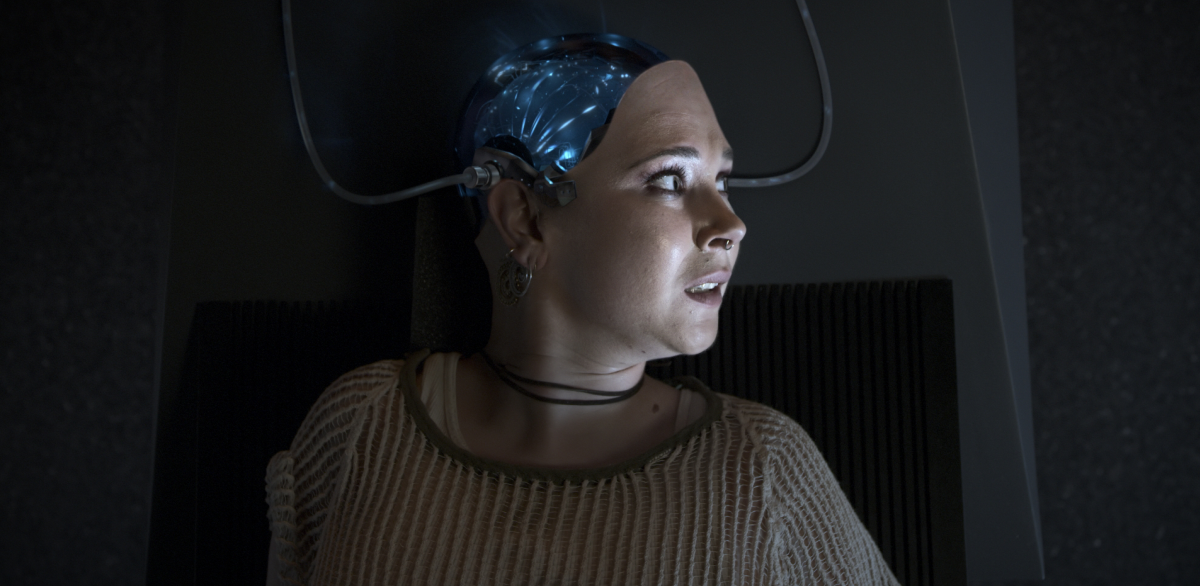

The robotic brain featuring in Electric Dreams final scene of Episode 8: Autofac.
Tasked with producing the visual effects of the 8th installment, Cutting Edge delivered 98 shots from the same scene within the Data Recovery Centre of the factory. Under the guidance of Cutting Edge VFX Supervisor Marc Varisco, our artists built three main design elements – the robotic brain, the GUI console and the Memory Wall. To transfer Autofac’s Episode Director Peter Horton’s vision to the screen, it was crucial the design elements gelled seamlessly together, appearing functional in a factory environment while channeling a magical, yet futuristic ambiance.
The first design element Cutting Edge artists produced was for the robotic brain. The brain concepts initially steered toward the organic, taking cues from Ava in Ex Machina, as well as Peter Horton’s vision of jellyfish and other transparent organisms. The aim was to maintain a very feminine profile to the negative space of the missing portion of the character’s (Emily’s) head, and design something that would complement, yet not overshadow the pivotal conversation that concludes the episode.
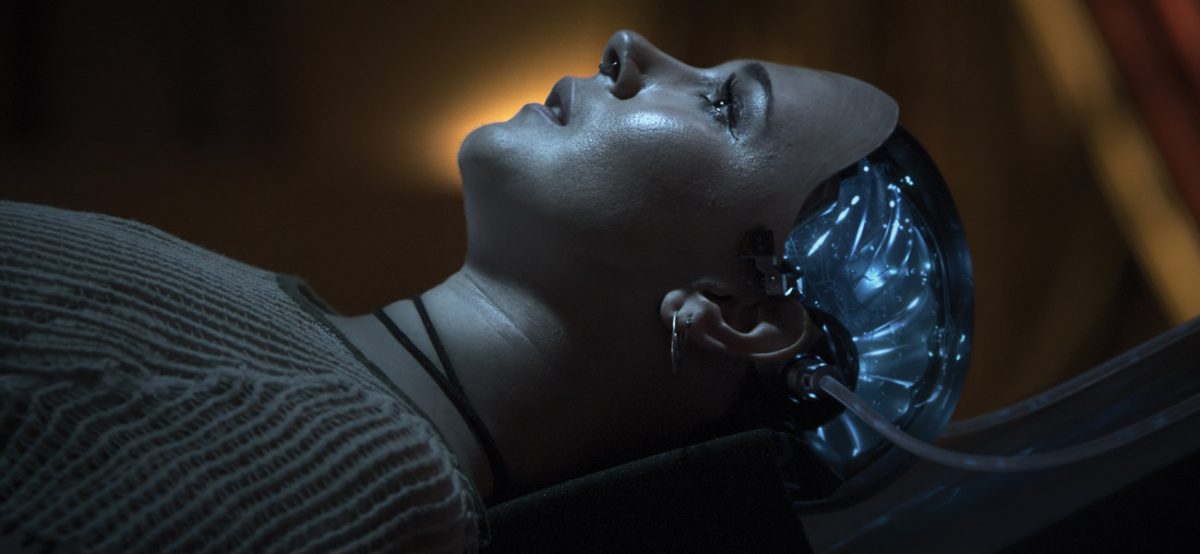

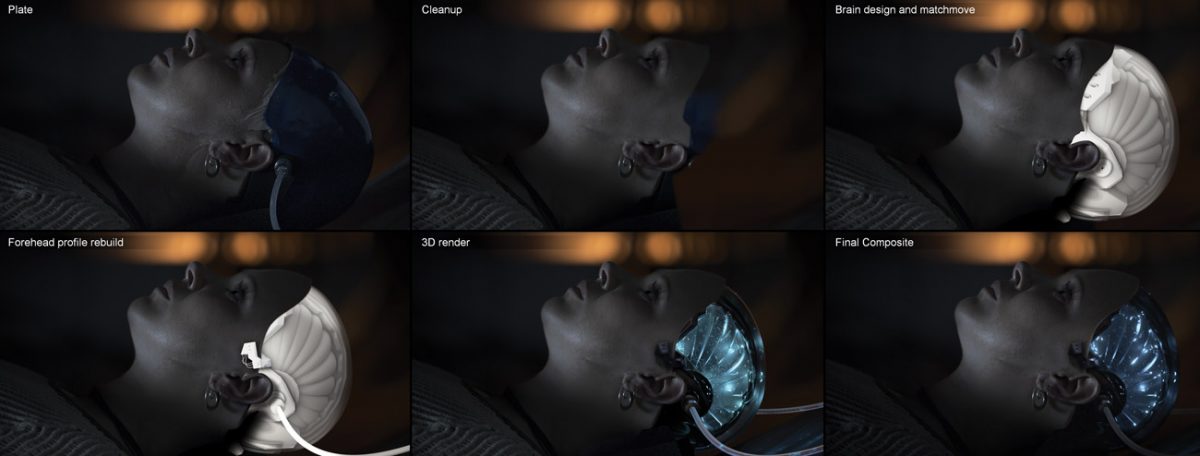

Designing the Robotic Brain: From Plate to Final Composite.
Once the team trialed a few organic options and we had Episode Director Peter Horton’s blessing, we introduced subtle filaments, displaying a synapse type lighting response. The introduction of filaments allowed us to perceive Emily’s memories being uploaded directly from her artificial brain to the memory wall. Once the brain asset had final approval, we moved into meticulously match-moving Emily’s head movements for every shot. Challenges arose across each shot if any slip occurred between the brain and Emily’s face. While re-designing the way the skin terminated into the digital brain, required heavy consideration.
“The brain was set-up and rendered through Houdini, allowing us to simply and efficiently propagate the large number of shots. We identified our master camera angles and beauty lighting for these views, before running all shots within the master camera set-up.”
Marc Varisco / Cutting Edge, VFX Supervisor
The second design element Cutting Edge artists produced was for the GUI Console. We pick-up the scene with Emily strapped to a futuristic gurney, with fiber-optic type tubes plugged into her newly exposed brain. Realising she is not alone, we reveal Alice an old school android who is preoccupied, interacting with a holographic glass console.
The director’s vision for this graphic user interface was to be simple yet functional. Because it plays out in front of the character, we wanted the graphics composition to subtly overlap and frame Alice, as well as maintain a level of realism to its purpose.
To create the console, our artists applied a basic aesthetic layout, to test the translation across all camera views within the scene. We adjusted elements that worked for one view, but not for others. After layout, colour and opacity levels of the GUI console were confirmed, we began animating subtle loops and motions to the elements. Our artists considered the actors hand gestures as Alice interacts with the interface, which needed to have a purpose during the scene. These actions reflected what unfolds during the conversation as Emily unleashes some hidden malware programmed into her artificial being. The GUI console was generated using After Effects, Cinema 4D and composited using Nuke.
Android Alice interacting with the Autofac GUI console.
The final design element Cutting Edge artists produced was for the memory wall. This was our visual glimpse into Emily’s memories being downloaded as she lay restrained, giving us the chilling revelations of what unfolds during the scene. Interestingly, Episode Director Peter Horton was really drawn to German artist, Gerhard Richter’s photographic abstract work, which inspired the treatment behind the memory wall. Taking the shot memories and treating them in After Effects with a subtle vertical scratch and streak treatment, adjusting the colour to suit, and re-defining the aspect of the memory. We then tried to give the illusion of the images coming and going from Emily’s subconsciousness, ever flowing and enlarging from a data stream which is a subtle retrospective view of characters we met in the episode.
You can stream Philip K. Dick’s Electric Dreams online at stan.com.au
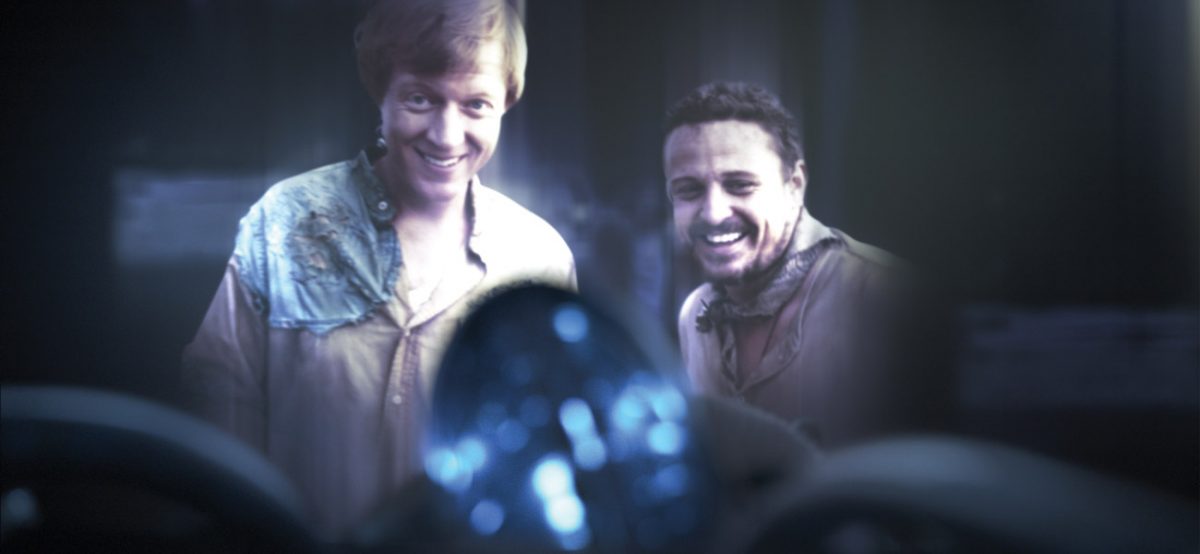

Emily’s projected memories with streak treatment applied.
Video: Electric Dreams Season 1 Trailer
